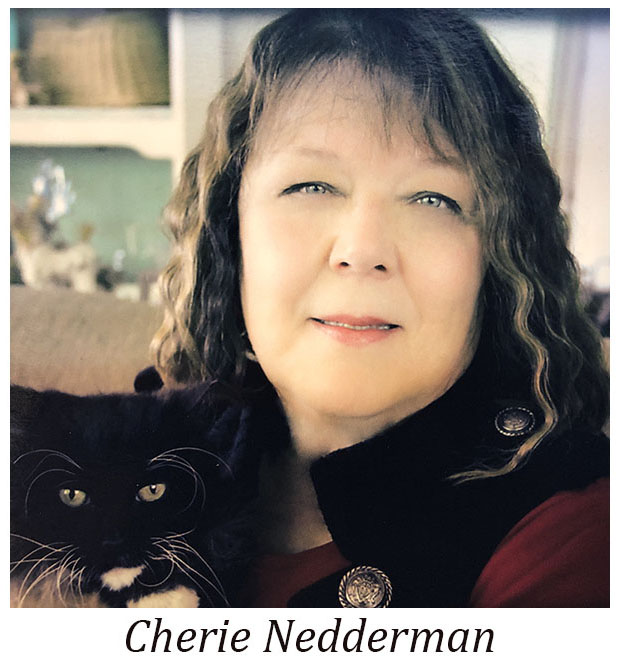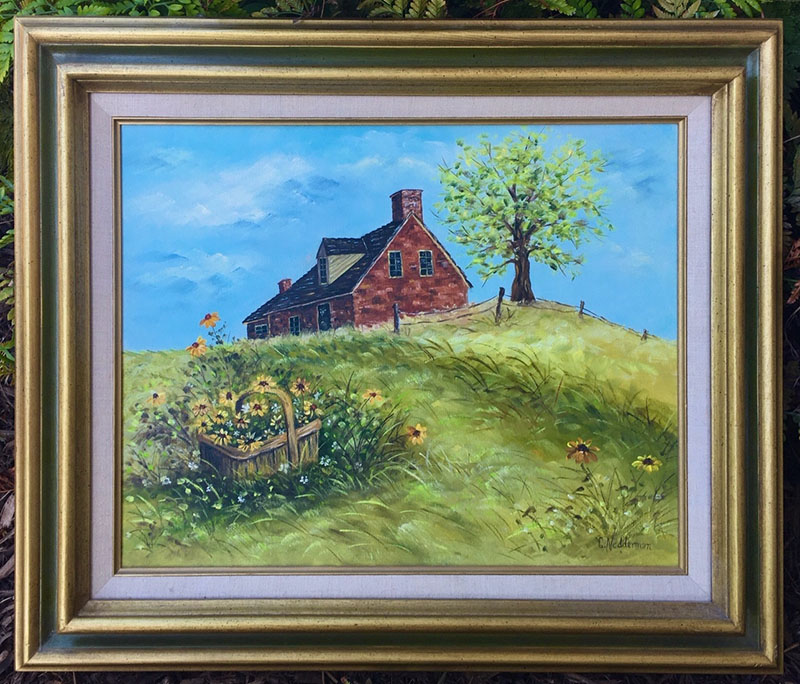 Nov. 13, 2019 — Dialysis nurse Cherie Nedderman loved art for art’s sake. The walls of her Camarillo home on the hill were covered with frame after frame of sycamore trees, tumbling waves and rolling green hills. Paintings echoing the peace she found in the California landscape.
Nov. 13, 2019 — Dialysis nurse Cherie Nedderman loved art for art’s sake. The walls of her Camarillo home on the hill were covered with frame after frame of sycamore trees, tumbling waves and rolling green hills. Paintings echoing the peace she found in the California landscape.
“She would sit outside and gaze at the hills, that was the view from her backyard,” said Art Program Chair and Professor of Art Liz King. “Inside her home, her art was in every room, every corner.”
When Nedderman died unexpectedly in January of 2019 during a relatively common heart procedure, her brother Ted Nedderman and his wife, Nancy, of Gig Harbor, Washington, were shocked and heartbroken.
“Cherie was 71 and had so much more living ahead of her,” Ted said.
It now fell to Ted and Nancy to find a home for Cherie’s precious collection of 58 “en plein air” or “outdoor” paintings of Southern California done between 1905 and 1965. The Neddermans decided CSU Channel Islands (CSUCI) would be ideal.
“We wanted it to be near her,” Nancy said. “And she was a nurse and there’s a wonderful Nursing program here.”
Faculty members from the Art program were thrilled to receive the collection, not only for its quality, but because of the art lover who put it together. Professor of Art History Irina D. Costache, Ph.D., pointed out that Cherie was not a high-end collector who really didn’t understand the paintings. She was a savvy collector who understood the paintings.
“She was a nurse trained to carefully observe, who understood the value of looking at paintings in connection with her profession, and loved the artworks enough to buy them,” Costache said.
“She collected art because she loved it,” said Art Program Chair and Professor of Art Liz King.
Cherie and Ted grew up in Portland, Oregon. Ted was the outdoorsman, joined the U.S. Army and became an endodontist, marrying his college sweetheart, Nancy. Older sister Cherie was artistic, nurturing, and a born collector.
“She had lots of antiques and collectibles,” Ted said. “She always loved art and was an artist in her own right.”
Cherie studied nursing at Walla Walla University where she became lifelong friends with two other nursing students who convinced her to move with them to Southern California.
Cherie enjoyed a career as a Registered Nurse in the Dialysis Unit at Loma Linda University Medical Center for over 23 years. She was also a medical insurance auditor, and later graduated from Cypress College as a Certified Medical Records Specialist. She was dedicated to her job, hiking, horseback riding, her Seventh-day Adventist faith, her friends, her family, her art, and the cats who came through her life, including her furry companions, Oreo and Frodo.
“She was very generous,” Ted said. “She always had a soft spot for people who struggled in life with depression, insecurity and homelessness. She gave a lot of money away, not only to her church, but to her community, to the Humane Society, to Gabriel’s House in Ventura and many other charities.”
 Cherie became interested in California art after getting acquainted with a neighbor who gave her a painting done by renowned Santa Paula artist Douglas Shively. Cherie then began seeking out and collecting paintings of early 20th century California.
Cherie became interested in California art after getting acquainted with a neighbor who gave her a painting done by renowned Santa Paula artist Douglas Shively. Cherie then began seeking out and collecting paintings of early 20th century California.
“The landscapes...they’re alive!,” King said. “In the seascapes there are crashing waves, and the way the mountains are depicted—it’s so dramatic. Whether or not you’re from this area, it evokes the feeling of California. Whoever painted these was observing every detail. These paintings are not static.”
Costache is excited about the collection both as an art historian and an educator.
“This is also a great teaching collection, which our students will be able to study up-close and learn how to examine original works of art, conduct research and write catalog entries,” Costache said. “It’s great for students to learn from actual works of art not reproductions.”
Costache said the collection contains several women artists who were somewhat unknown at the time as women artists were not taken as seriously then.
“One of the women was better known because she used a man’s name: Roger Scott,” Costache said. “Studying this collection will help students learn how artistic recognition is developed in our culture and how values change in our history—in this case, views on gender.”
Costache and King are making plans for the collection, which is currently being safely stored. The educators plan an exhibition sometime next fall and perhaps an interdisciplinary course with the Nursing program as Cherie was a nurse.
“It’s a very important trend in the medical field to use the skills of art history—looking and observing very closely—and transferring those skills to the observation of a patient,” Costache said.
The Neddermans believe Cherie would be happy with the collection’s new home.
“She didn’t know she was going anywhere, but we had a conversation once and she said ‘When I can’t enjoy these paintings anymore, I want them to go somewhere where other people can enjoy them.’” Ted said.
